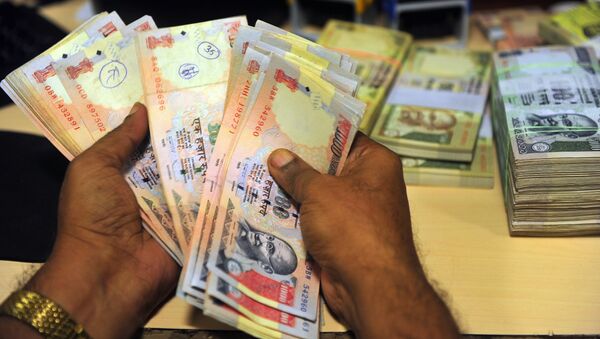Ahead of the presentation of the national budget by Finance Minister Sitharaman, India is on a sticky wicket as far as revenue is concerned. The country is likely to falter on both tax as well as disinvestment receipts for the current financial year (ending March 2020), say officials from the Indian finance ministry.
In the budget tabled on 5 July last year, the Indian ministry of finance targeted direct tax revenues of $188 billion for 2019-20, including corporate taxes and personal income taxes. Of this, the corporate tax target was set at $108 billion, and personal income tax target was $80 billion.
Last year, the national budget was tabled in July because of parliamentary elections in April and May.
Sources in the finance ministry revealed that the collections are way behind and nowhere near the targets.
“Against corporate tax collection of $108 billion, the collection through 15 January stands at $54.5 billion. Similarly, on the personal income tax front, the collection is at $46 billion, lagging behind the target of $80 billion,” said a government source on condition of anonymity.
Even though the ministry is hoping that collection will rise in the remaining two months of the financial year (February and March 2020), there could still be a wide gap in revenues. “The final shortfall could be to the tune of $15billion - $20 billion,” said the official.
Experts blame the shortfall on several factors, including the economic slowdown and low consumer spending.
India’s major indirect taxes were subsumed, under the Goods and Service Tax (GST), launched in July 2017. However, the GST revenues are also set for a major shortfall in the current financial year.
Against a GST revenue target of $93billion announced for the current financial year (April 2019 – March 2020), the mop-up until January has been just $64 billion, according to finance ministry data.
The income tax department, which comes under the Indian finance ministry, has asked its top officials to ensure that the target is met.
Experts believe that it is the slowing economy which has to be blamed.
“From where will GST revenue come, when the economy is slowing? Indirect tax collections will go up only when the economy recovers from its slow pace of growth. GST collection may remain marginally higher than the last year’s collection but meeting the target is out of the question,” said V.S. Krishnan, former member (GST), Central Board Indirect Taxes and Customs, which oversees indirect tax collection in the country.
India is also likely to falter on the disinvestment target as per officials in the ministry. Against a budget target of $15 billion, the disinvestment receipts may barely cross the 20-25 % mark.
A dent in the government revenues had been a foregone conclusion as India faces an acute slowdown.
The Indian government has lowered its own Gross Domestic Product (GDP) estimates for the current financial year to 5 per cent from 7 per cent projected earlier. India’s GDP has almost halved from a high of 8 per cent in April-June 2018 to 4.5 per cent in July-September 2019.




